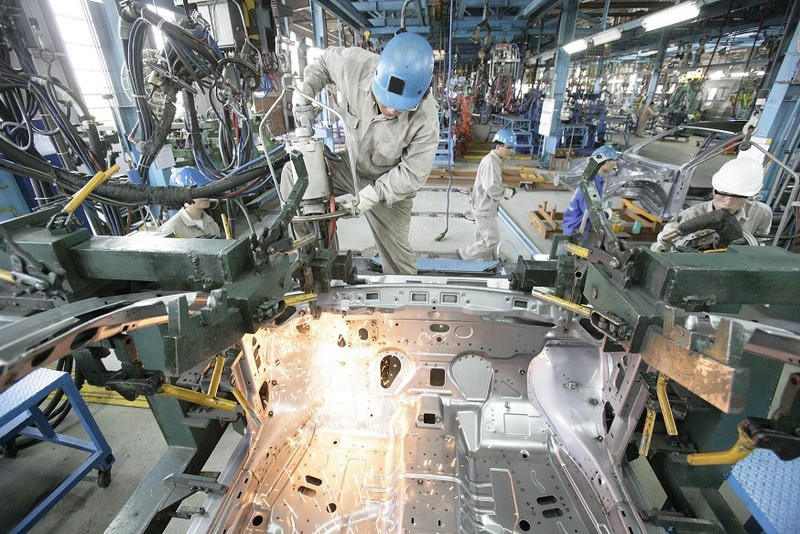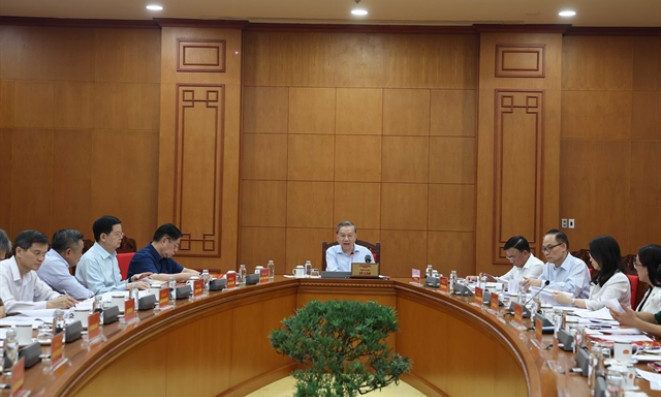Economy pressurised for further growth
Amid a decrease in industrial production, Vietnam is under great pressure to help the economy out of its woes and to touch its desired economic growth targets from now until 2025.
On September 27, the Asian Development Bank (ADB) issued its Asian Development Outlook (ADO) September 2023 report, stating that Vietnam’s economic growth is expected to slow down to 5.8% in 2023 and 6.0% in 2024, compared to the April 2023 forecast of 6.5% and 6.8% respectively, mainly due to weak external demand.
The report noted that the main forces impacting the economy have been the global economic slowdown, monetary tightening in some advanced countries, and the disruption caused by exacerbated geopolitical tensions. Inflation forecasts for 2023 are revised down to 3.8% from 4.5% and 4.0% from 4.2%, for 2024.
“Weak external environments, including a subdued recovery in China, has hampered export-led manufacturing, thus shrinking industrial production in Vietnam,” said ADB country director for Vietnam Shantanu Chakraborty. “However, the economy remains resilient, and recovery is expected to pick up in the near future, driven by strong domestic consumption, which is supported by moderate inflation, an acceleration of public investment, and improved trade activities.”
While Vietnam’s industrial production is shrinking due to falling global demand, other sectors are forecast to display healthy growth. Services are expected to continue expanding, supported by a revival in tourism and the recovery of associated services. Agriculture will benefit from rising food prices, and it is expected to expand by 3.2% in 2023 and the following year.
Under the ADB’s calculations, declining global demand hit manufacturing in Vietnam, leading to cuts in the forecast for related sectors. The manufacturing purchasing managers’ index edged above 50 (expansionary) in August 2023, after five consecutive months of contracting, indicating a recovery of consumption-led manufacturing. The industry is forecast to grow at 7% in 2023. Construction could pick up if major infrastructure projects can be implemented as planned.
The report also highlighted significant risks to the outlook. Domestically, systemic problems with disbursements of public investment and structural weaknesses in the real economy, are the main downside risks to the economy.
Externally, a substantial slowdown in global growth and a weak recovery in China could adversely affect Vietnam’s exports, manufacturing activity, and employment. Sustained
high-interest rates in the US and Europe and a stronger US dollar may cause further problems for the recovery of external demand and lead to weakness in the dong’s exchange rate.
National Assembly (NA) Chairman Vuong Dinh Hue gave a warning that the Vietnamese economy’s competitiveness is on the decline, with several growth impetuses waning.
“The economic growth rate in the first half of this year reached only 3.72% year-on-year, making it very hard to reach the desired year’s goal of 6.5%. This would also mean our growth target for the 2021-2025 period will be affected,” Chairman Hue stated at last week’s Vietnam Socioeconomic Forum 2023, in Hanoi.
The NA set a target earlier that the economy will grow 6.5-7% a year, in the 2021-2025 period.
“In the first eight months of this year, industrial production and construction have failed to become a key driving force for economic growth. This is quite risky for the economy, as it is now changing toward a new growth model, in which industrial production is considered an important pillar,” Chairman Hue said.
According to the General Statistics Office (GSO), Vietnam’s eight-month index for industrial production (IIP) suffered from an on-year drop of 0.4%.
The year-on-year eight-month IIP, of the years during the 2019-2022 period, stood at 9.5, 2.2, 5.5, and 9.2%, respectively.
The eight-month IIP of 2023 for processing and manufacturing went down by 0.6%, as compared to the corresponding period last year when such an IIP ascended 10.1% year-on-year.
“Our economy is facing massive difficulties, in which the resilience of enterprises in general is weakening, as they almost have no markets for their products,” Chairman Hue said. “It is now urgent to help enterprises out of difficulties as soon as possible. Once they become stronger, the economy will be stronger.”
Jochen Schmittmann, resident representative of the International Monetary Fund (IMF) in Vietnam, also commented that, like many other economies, Vietnam has been hit hard by global headwinds, which have dented the country’s economic growth in the first six months of this year.
“Such headwinds have affected Vietnam’s exports and industrial production. However, I believe that the economy will recover in the second half of the year, thanks to global demands bouncing back and nations’ efforts in dealing with issues related to finance and property,” Schmittmann said.
Prompted by economic difficulties, the IMF also reduced its 2023 prediction for Vietnam’s growth from 6.2% in January, to 4.7% in July.
“Nevertheless, Vietnam will still be affected by interruptions in global supply chains. Vietnam would need more support for enterprises,” Schmittmann added.
According to the Ministry of Finance, in 2023, a package of about VND200 trillion (8.44 billion USD) is earmarked for supporting businesses in the form of tax exemption and reduction. So far, more than VND130 trillion (5.48 billion USD) has been realised.
In the coming time, another sum of 65 trillion VND (2.74 billion USD) worth of budget revenue from last year, will be added to the package, said MoF Deputy Minister Vo Thanh Hung.
Tran Dinh Thien, former general director of the Vietnam Economics Institutes commented, that after three years of COVID-19, “Almost all businesses have become exhausted due to a lack of capital and markets, while banks in general cannot provide them with loans for a variety of reasons.”
“If enterprises want to approach loans, they must have collateral, but many of them have become poor enterprises without valuable assets to mortgage at banks, while banks need specific collateral before granting loans for businesses,” Thien said at the forum. “This is quite a big paradox in the economy. In many cases, even when enterprises are offered loans, they cannot boost production and business activities, as there are no output markets for them. They cannot sell their products.”
He cited the GSO as stating, that the first eight months also saw 71,800 businesses with halted operations – up 20.5% as compared to the corresponding period last year; 41,100 enterprises stopped operations and waited for dissolution procedures – up 26.7%; and 11,800 enterprises completed such procedures. On average, about 15,600 businesses were kicked off the market every month.
Meanwhile, according to the World Bank, given ample fiscal space, the fiscal policy in Vietnam should take the lead, ensuring a much better implementation of the investment budget for 2023. Besides suggesting more support for enterprises, the bank has also underlined boosting the disbursement of public investment, as one of the key driving forces for further economic growth.
“A full implementation of the planned investment budget would bring public investments to 7.1% of GDP in 2023, up from 5.5% planned in 2022, providing a fiscal impulse of 0.4% of GDP to support aggregate demand,” the World Bank said.
The government has planned an on-year 38% increase in public investment for 2023 – equivalent to 1.6% of GDP, as part of the 2022-2023 Programme on Socioeconomic Recovery and Development. It is accelerating implementation with disbursement of the public investment budget jumping by 43.3% year-on-year during the first semester of 2023. However, historical public investment implementation rates have been low in the recent past, for example reaching only 67.3% in 2022.
“Steps to accelerate and improve the efficiency of implementation would also help address emerging infrastructure constraints to growth, including critical investment needed in the electricity transmission network and in building resilience to climate change,” said the World Bank.






